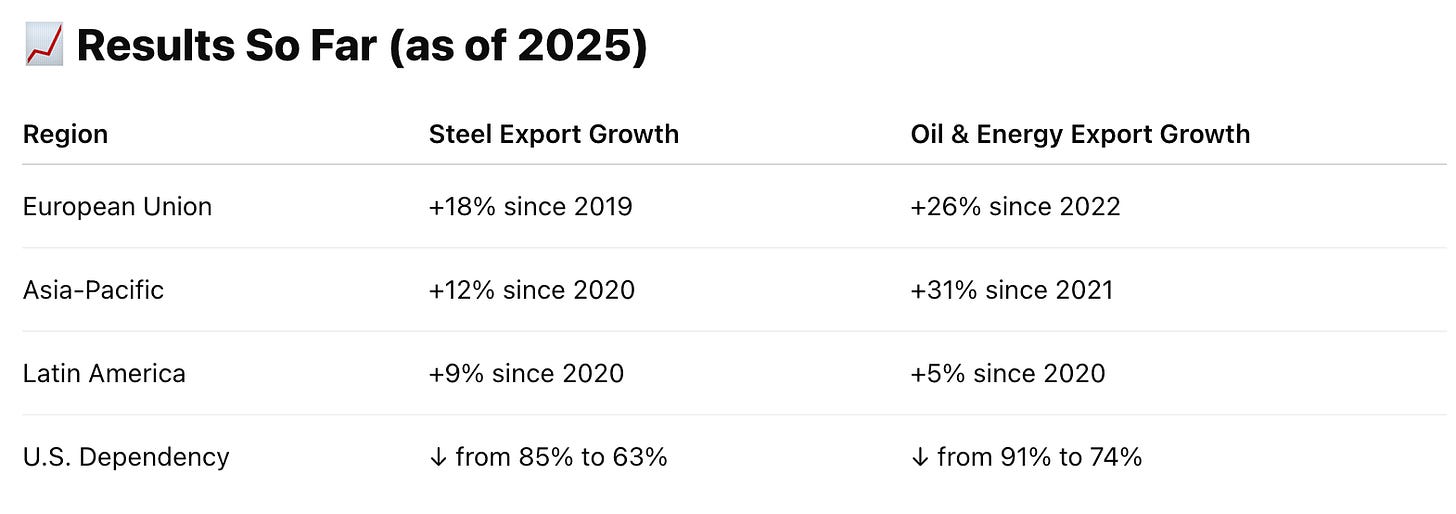Fortress Canada: How Trump's 50% Steel Tariff will Backfire, Supercharging Canada's Global Trade Reboot
Remember When Trump Said Canadian Steel Was a National Security Threat? Yeah, So Do We. Which is why we moved on...
At 12:01 a.m. ET, Donald Trump torched what was left of the U.S.-Canada trade relationship by jacking steel and aluminum tariffs up to an unhinged 50%. Trump called Canadian steel imports a "national security risk." We call it economic vandalism with a beautiful butterfly effect.
While MAGAland claps for higher car prices, more expensive cans of soup, and mass layoffs in aluminum finishing mills across the U.S., Canada is doing something radical: winning. Trump’s economic temper tantrum has finally pushed Canada to do what it should have done a decade ago—ditch dependency on the U.S. and build its own future.
Steel: From Rust Belt Victim to Global Supplier
Back in 2018, Trump slapped 25% tariffs on Canadian steel using the laughable excuse that we were a "national security threat." Since then, Canada has:
Slashed steel export dependency on the U.S. from 85% to 63%
Grown EU steel exports by 18% thanks to tariff-free trade under CETA
Used the CPTPP to move steel into Japan, Vietnam, and Malaysia
Canadian companies like Algoma Steel and ArcelorMittal Dofasco have invested in green technology, securing $1.7 billion in federal funding for decarbonized production. That’s made Canadian steel compliant with the EU Green Deal—and way more attractive to eco-conscious Europe and Asia.
Even as Trump doubled tariffs to 50% last week, Canadian steelmakers were already in the midst of a pivot: Algoma is redirecting its supply to domestic buyers and securing small but growing deals in Asia and South America. Meanwhile, aluminum execs say they’ll send their low-carbon metal to Europe, where it’s wanted.
Oil & Energy: No More Begging for U.S. Pipelines
Trump killed Keystone XL and threatened to "cut off" Canadian oil. Fine. We’re done.
Canada has:
Signed new energy pacts with Germany, Poland, France, and the Netherlands for hydrogen, LNG, and critical minerals
Expanded the Port of Saint John to ship crude to Europe
Fast-tracked Goldboro LNG and Énergie Saguenay projects
And under Mark Carney? We’re about to build the energy corridor of the century. Carney’s cross-Canada pipeline plan isn’t just about Alberta oil—it’s about jobs, infrastructure, and steel. It’s a shot of adrenaline for domestic producers, ensuring that Canadian steel and aluminum have a homegrown market even if MAGA slams every door.
Fortress Canada: The Numbers Tell the Story
That’s not just a pivot. That’s an economic revolution.
Experts Say This Is Just the Beginning
Jean Simard of the Aluminum Association of Canada says selling to the U.S. is now "economically unviable" and that Europe is the future. Algoma Steel CEO Michael Garcia is already shifting production for Canadian infrastructure projects. And Prime Minister Mark Carney? He’s not waiting for Trump to come to his senses—he’s fast-tracking national pipelines, power grids, and defense manufacturing.
Carney’s message is clear: “Our old relationship with the United States is over, and Canada has many, many other options.”
Trump’s Trade War Is a Canadian Opportunity
Instead of folding, Canada is:
Building east-west trade corridors
Locking in export partners across Europe and Asia
Ramping up green manufacturing to meet global standards
Trump's tariff tantrum isn’t a threat anymore. It’s a springboard. Canada is standing taller, trading smarter, and building stronger.
Because you know what? If you don’t have steel, you don’t have a country.
And Canada's steel is going global.








Good job, Dean! Thanks for bringing it all together! Go Carney!
🇨🇦🇨🇦🇨🇦🇨🇦🇨🇦🇨🇦🇨🇦🇨🇦🇨🇦